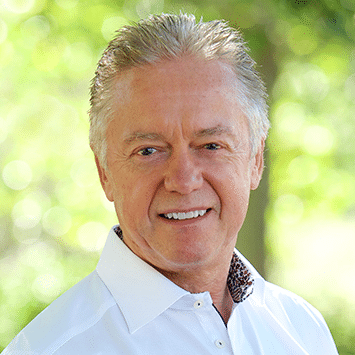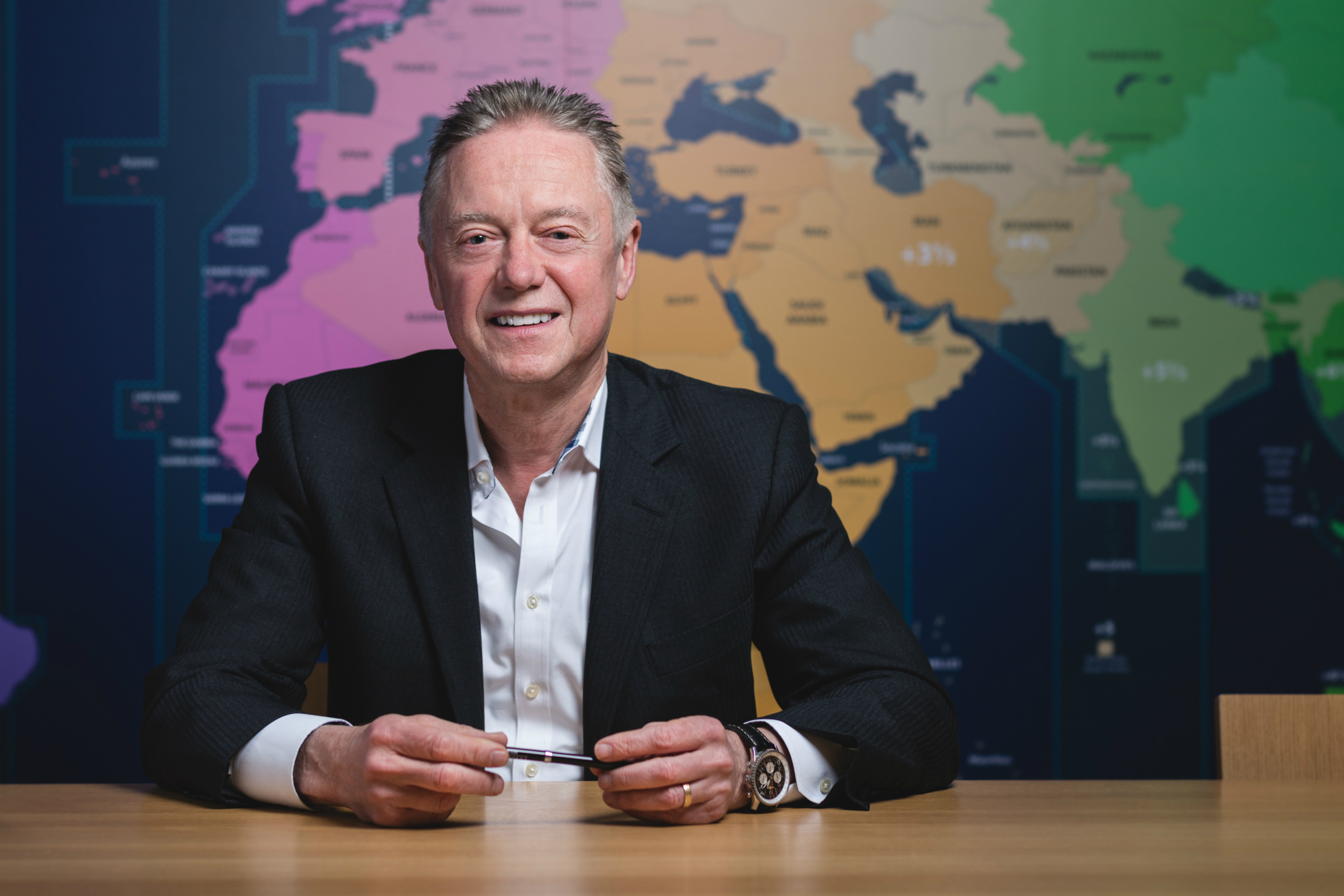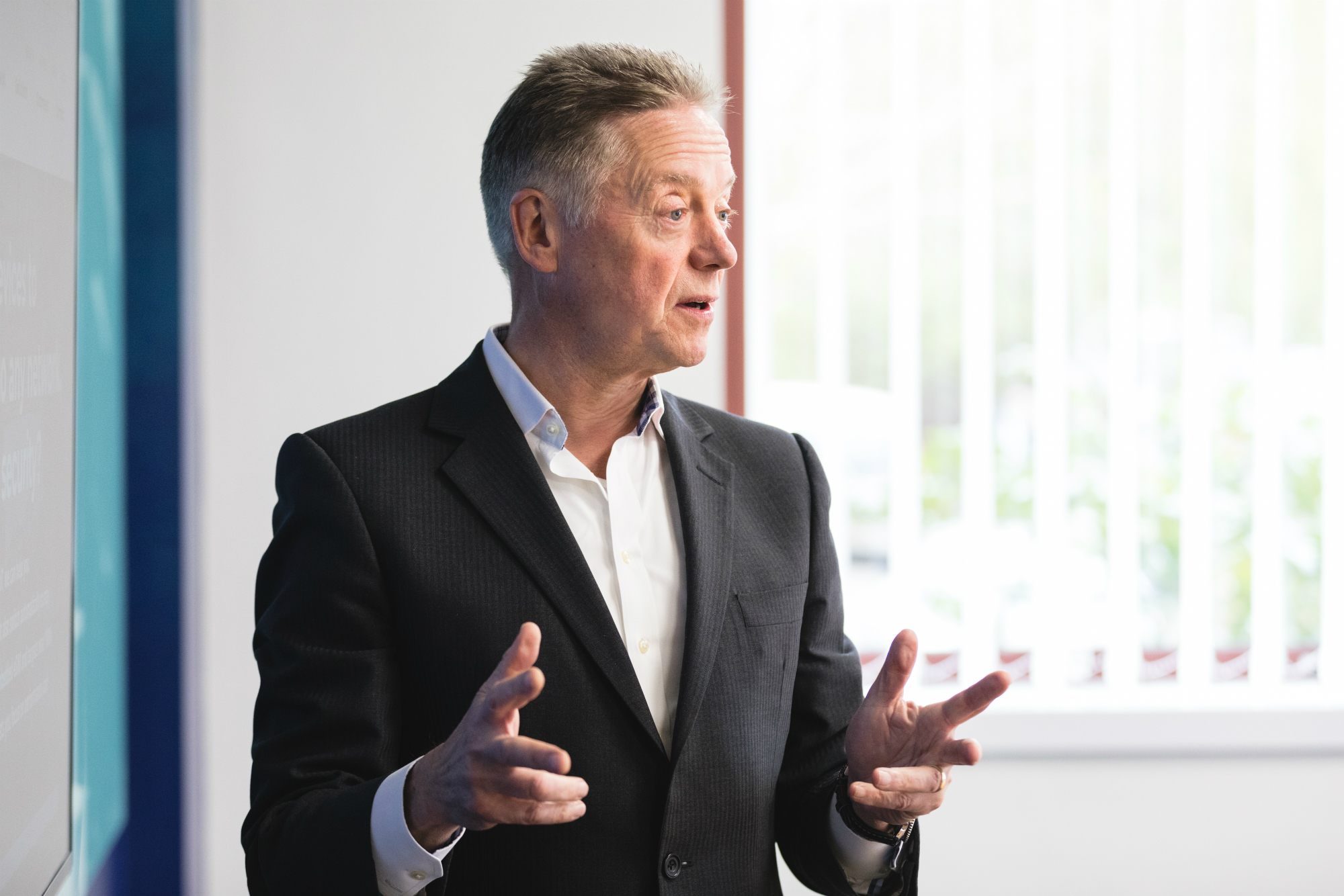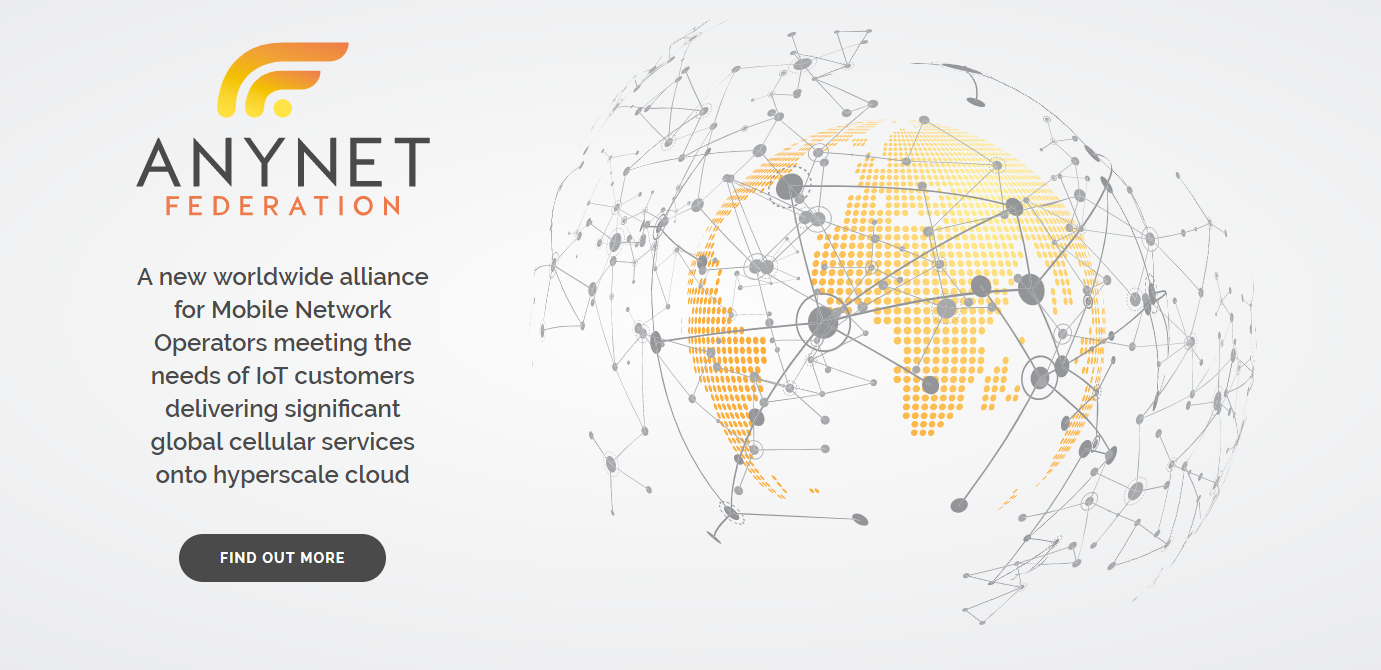News
05 September 2019
Reading Time: 8 mins
Global IoT: Everyone’s talking about it. So why isn’t it happening?
An Interview with Eseye CEO Nick Earle
News
05 September 2019
Reading Time: 8 mins
An Interview with Eseye CEO Nick Earle

Nick Earle
Executive Chairman
LinkedIn
“The MNOs have got a real problem when it comes to IoT. One problem is the race to zero on pricing for roaming.” As Jeremy Cowan says, the little bit of Yorkshire blood in me respects the directness of Eseye’s CEO. As they say, Nick Earle calls a spade a spade.
He believes the European Union (EU) meant well when it basically abolished roaming rates across the continent. We all now get this text on our phone; ‘Good news. You’re in one of our roam-free destinations.’ The EU wanted to make it zero, free. Of course, mobile network operators (MNOs) objected as they had invested all these billions in their networks, and now the EU were saying they couldn’t charge much for it. It was the net neutrality argument all over again.
When European operators needed to roam on to, for instance, US networks like Verizon and AT&T, they questioned why this should be different to Europe. The US networks then questioned why, because of the EU regulations, they were being pressured to take a 90% reduction in roaming revenue.
Keep the faith. There is an Internet of Things (IoT) point to all this.
Nick Earle takes up the story. “This pressure has resulted in reduced roaming rates, however the operators are questioning whether this is sustainable.”
EU’s consumer focus ignores IoT
“You could make the argument, that’s good, isn’t it? Because as a consumer, I’m not paying very much for data. The problem is, no-one is making money on IoT. That’s the Emperor’s new clothes position, nobody is making money. Everybody will admit that. You ask the network operators, and they say, ‘Not on any roaming agreements.’ We’ve seen operators starting to renegotiate roaming rates or in extremes turning services off completely.
To put this in context, let’s take a look at a real world example. One of Eseye’s customers in the US, has 120,000 vending machines that use Eseye technology and they typically roam on to AT&T.
“In 2018, AT&T supplied notification to customers and roaming partners of 2G sunset. If Eseye had supplied AT&T native SIMs, this could have resulted in the customer being faced with a truck roll to 120,000 machines to change the SIMs to ensure service continuity on the remaining 2G network. Instead we utilised our IoT connectivity platform, to steer these devices to the alternative network. This was successful and we were able to get just under 100,000 of the devices connected over-the-air.”
Earle concedes that the customer still was unable to guarantee service on around 20,000 machines, “we got at least 80% of the devices updated over-the-air, however 20% required hardware changes as a suitable alternative network was not available. How much did this save them? Well, the cost of a truck roll is US$100 (€90.5). For 120,000 machines, that’s $12 million (€10.8 million). And anyway, there weren’t enough trucks in the three-month period to do 120,000 truck rolls. Furthermore, we were able to help prioritise the locations to target for hardware upgrade.”
“At much the same time AT&T were under pressure on roaming rates, which resulted in them implementing a series of measures to protect revenue. The impact of this was that AT&T became unavailable on a number of roaming routes, this required Eseye to also change the underlying IMSI profiles to the customer’s devices to assure continuity of service across multiple networks.”
He says the MNOs are becoming more parochial in their behaviour, because they have to. “It’s an unintended consequence, because of a well-meaning action to drive roaming rates down, the economic model for the MNOs of receiving traffic is making it unsustainable. So, they are now taking actions against each other to discourage roaming – and this is a trend we are now seeing all over the world.”
Creative pricing
The MNOs are having to find different creative ways of doing it, according to Eseye. Some operators are setting minimum fees, some are imposing new minimum revenue commitment per connection. But the net effect, says Nick Earle, is that roaming agreements are not guaranteed to be permanent and that’s a big issue for customers wanting to implement global projects.
Over and above this, users also want interoperability. “They want everything to interoperate like the internet. There aren’t multiple internets, there’s one. They want the equivalent of the Internet Protocol standard but for IoT. But what’s starting to happen in mobile networks is that MNOs are coalescing into camps, they’re raising their prices, and are actually renegotiating IoT roaming agreements. This is the big picture. So now it’s becoming really hard to roll out global IoT.”
What, then, is going to deliver the vision of 50 billion connected things?
“As we move from experimentation into mass deployment, the trigger for that is large global rollouts by the Fortune 1000. What do large global companies want? Single product SKUs (stock keeping units), whether it’s a coffee vending machine or an autonomous lawnmower. But if the outcome is they now have to put local SIMs into their products, then the business model doesn’t work.”
Eseye’s CEO calls it Catch-22, after the Joseph Heller novel about a wartime dilemma from which there is no escape because of contradictory conditions. “It’s not profitable for the MNOs to do global rollouts because of what’s happening. They have to take traffic from other MNOs but the roaming prices have dropped so they’re all losing money on permanently roaming IoT. At the same time some countries are tightening up on permanent roaming restrictions which also discourages IoT roaming as devices are very likely to be in country for more than 3 months. The Catch-22 is that if MNOs want to target global IoT deployments, they are forced to open their home network to outside operators, which means they lose control of the customer and the revenue.
In addition, some locations in the world, due to the regulatory framework, make it impossible to deliver IoT connectivity solutions regardless of the commercials,” he adds.
MNOs retreat into walled gardens
Earle had previously mentioned that the network operators are coalescing into camps. Why do that, I ask, if the same EU-wide regulations apply?
“The operators are coalescing into their existing roaming agreements. For example, the global SIM that Vodafone offers you is prioritised for the companies that Vodafone have acquired or have partnerships agreements with. But it’s a series of walled gardens. The effect of these walled gardens from the MNO is that the best global coverage you can get is about 80%. For example, Vodafone can’t give you a truly global SIM because in the US, they can’t guarantee the traffic onto any local network. So, they have a series of local roaming agreements,” says Earle.

So, what’s the answer?
Eseye believe there is more than one solution to this global IoT connectivity challenge. The first part is in order to provide guaranteed connectivity in any given geography you need multiple IMSI profiles. The second part is around localisation, where using eUICC (embedded Universal Integrated Circuit Card), a local profile is deployed to the device.
But there’s two other big factors to consider, according to Earle.
“You’ve got the MNOs not making money. The customer wants ubiquitous, global IoT out of the box. Traditionally, if your prices drop as an MNO, you’d say, that’s okay; I won’t make money on the data, but I’ll make money on IoT managed services. I’ll do security management, configuration and device management. The problem is it’s challenging for them to offer services outside their home market.”
The real problem for network operators, however, is the entry of companies like Amazon and Microsoft into the Internet of Things. “Now the hyperscale cloud providers have suddenly arrived at the party and are doing to the MNOs exactly what they did in Cloud storage. AWS (Amazon Web Services) and Microsoft Azure are truly global, they’re not required to hold a telecom licence as a service provider. The fact that they are not a telco means they can operate globally and are able to offer centrally-driven policy and global security management as a service.
Squeeze on mobile operators
“So the added value parts of the stack – which is the traditional answer to commoditisation of prices – are now being done by the cloud providers. So here is a squeeze on the MNOs.”
All of this is making it hard for the IoT customer to get what they want, which is ubiquitous, global deployment out of the box.
Earle remembers Michael Porters’ Five Forces analysis from a stint at Harvard Business School. As he says, “You’ve got the MNOs, the customers, and the hyperscale cloud providers and now you get the fourth entrant, which is the device guys. The Silicon guys, like the module providers, are embedding the eSIM functionality into their modules, and everything just works on power up.”
I’m sworn to secrecy. All I can say for now is, standby for not one but three significant Eseye announcements in the coming weeks that set about unravelling this Catch-22 to truly enable global IoT deployments.
Let’s go back to Earle’s analysis of the Five Forces. The first four are; the MNOs being squeezed by roaming rates and commercial agreements and forming more and more walled gardens, the customers demanding global deployment, the hyperscale cloud providers offering greater value to the customer, and the fourth is the module manufacturers who Earle says are simplifying the process of IoT deployments, globally.
“What they’re saying is, ‘I’m going to make it even easier for you to have a global module that will connect to say AWS, anywhere around the world.” Of course, the fifth force that Earle puts in the middle of the other four is Eseye.
IoT Now presses Nick Earle to go further.
“What I can say, on the record, is building upon the existing AnyNet partnerships we are negotiating with a number of major mobile network operators around the world to join the AnyNet Federation. We will be the first company that the MNOs share their eUICC profiles to.” That’s important, he says, because it gives a lot of credibility to the five forces analysis. “The more eUICC profiles we get the more we can provide local profiles, global pricing, global invoicing, global management and global support. This is what the large enterprises want”.
“Why would an MNO give Eseye their profile management, the core of what they do? Why would they allow us to actually look as if we are them, the operator?” Earle says the reason that they will do it is because Eseye’s model solves the problem of the five forces for the MNO and allows them to win large global IoT deployments and localise the data onto their network while still retaining ownership of the customer.

Getting on with Amazon
IoT Now asks, “Is the only way for them to get onto the Amazon space to be working through you?”
“No, that’s a very good point,” says Earle. “You can as an MNO, obviously, build an interface and get onto Amazon. If you go to Amazon Marketplace, you can buy specific MNO connectivity today. However, with Eseye the MNO gets to compete and win the global deals, servicing the AWS traffic through localised data agreements – it’s the best of both worlds. Additionally, AWS can do all the billing to the end user,” Earle adds.
The AnyNet Federation model works with Amazon, but it also works without Amazon. The mobile network operators that Eseye contracts with are doing it to solve the economic problem of how to do profitable global IoT business. “It helps explain why we are actually being enthusiastically embraced by mobile network operators, because it allows them to compete and win profitable global IoT business that would otherwise have not been visible to them.”
“Is this really what’s holding back IoT?” asks IoT Now.
“That’s my point, Jeremy. Just look at the data. Ten years ago, when I was at Cisco, John Chambers (then CEO) was talking about 50 billion things being connected. You probably know better than us, but if you exclude phones, what are we at? One or two billion?”
“A billion, maybe a billion and a half,” I suggest.
“There’s certainly demand out there. If you can do EV (electric vehicle) charging units and vending machines, (connected) nappies (No word of a lie. We will report on this, Ed.) and coffee machines, everyone’s going to digitise. McKinsey say digitisation is the next wave of disruption. Everyone’s talking about it. So why isn’t it happening? And you suddenly realise; it’s the economic model, the main players are trying to slow it down. The economic model is broken, and it was all well-meaning.”
The author is Jeremy Cowan, editorial director of IoT Now & VanillaPlus
Original article available here: https://www.iot-now.com/2019/09/05/98456-global-iot-everyones-talking-isnt-happening/

Nick Earle
Executive Chairman
LinkedInNick is the Executive Chairman at Eseye and believes in connectivity that ‘just works’; that makes people’s lives and jobs easier; connectivity that’s invisible. He’s a visionary business leader with a distinguished career in technology spanning more than 30 years, spanning large corporations and dynamic start-ups and oscillating between start-ups and global IT, tech and transportation companies.
Previously, Nick led organisations and cross-company transformation programs for two $50B global corporations; Cisco where he ran the Cloud and Managed Services business as well as their Worldwide Field Services function, and Hewlett Packard where he ran the global Enterprise Marketing function and the internet transformation strategy.